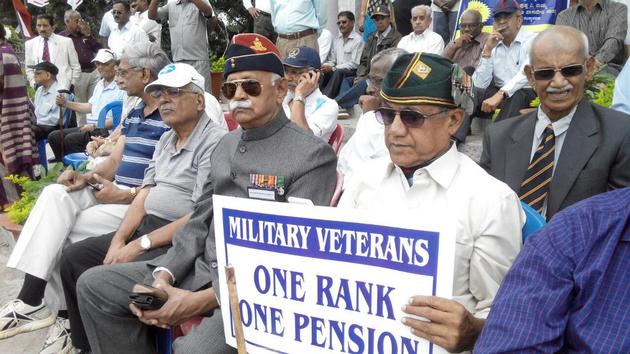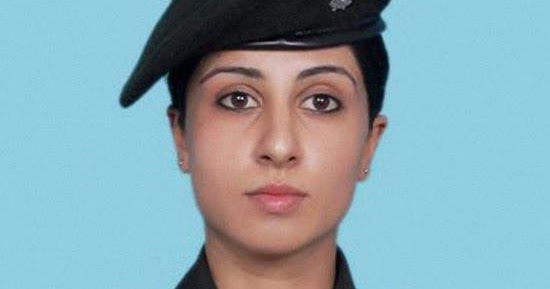What we need to understand is that, it’s a “demand for equality.”
To precisely understand OROP quantitatively, here’s an example: An officer of a rank of a ‘Major’ who retires before 2005 gets a pension of 30000, where as a ‘Major’ retiring after 2005 gets a pension of 35000, even after serving for the same tenure and retiring at the same age. This is certainly wrong. And this is a practice across the hierarchy for the various ranks.

One rank one pension has been a demand by the armed forces since 1973, after the then Prime Minister, Indira Gandhi, discontinued it by way of an ‘ex-parte’ decision following the third central pay commission, previously it was uniform and OROP was followed. This termination of OROP has caused the foreboding and has since then become a cause of public protest by the veterans of the armed forces.
An all party ten member parliamentary committee known as the ‘Koshyari Committee’ headed by Bhagat Singh Koshiyari, the sitting BJP MP from Nainital, was formed and it had unanimously found Merits in the OROP and demanded its implementation. This committee claimed that the reports prepared on OROP in 2011, were fool proof and could have been implemented at the time of UPA government headed by Mr. Manmohan Singh.
India is suffering already because of high unemployment and under-employment. And this particular segment of retired people deserve the best because practically and emotionally they are the reason why the citizen and civilians are safe and protected from the enemies, they give in their youth and life for the nation and security of countrymen leaving them weak and disabled in most of the cases at an early age. It is the servicemen who stake their life at the times of emergencies and calamities as well. It is because of their fearlessness and unconditional serving attitude we take a pride in being called a capable nation.
Approximately 60,000 armed forces personnel retire or are released from active services every year. Most of them are in the age bracket of 35- 45 years. Presently the number of pensioners to serving personnel in military is 1.7: 1; whereas the same for the civil work force is 0.56: 1, the ratio of military pensioners to the serving armed forces personnel can be decreased only by way of providing them alternative sources of income by way of sensibly absorbing them into government organizations and departments where their unique skills, training, discipline and strength can be optimally used. Despite such proposals of lateral transfers from Defence departments to Civil departments, these proposals are yet to be implemented in a meaningful way. Once implemented, these can certainly reduce the pension bills drastically.
A second career for them is not only important but a necessity! Though the Director General (Resettlement) or DGR which works under Department of Ex-servicemen Welfare, set up in 2004, in the Ministry of Defence, India, prepares the ex-servicemen for a second career , 100% of resettlement is not practically possible pertaining to various issues. So a major segment is dependent on pension for their day to day necessity.
The veterans who are involved in demanding the OROP and the ministries are unable to come to a conclusion pertaining to the delay on the issue. The OROP has been delayed for various reasons, a few of them are listed below:
- The delay and ignorance for years by various political parties have left the veteran ex-service men aggrieved and they want a time frame for things to happen. They are pressurizing the government to take quick steps but some of their demands are not agreeable because this will not benefit the lower rank holders.
- Veterans are demanding the base year to be 2014 where as for the Finance Ministry it is reasonable to calculate taking 2011 as the base which was formerly agreed to. It is emphasized, to keep the financial burden in control.
- The veterans somewhere are overlooking the facts and figures and the large volumes of monetary calculations involved and demanding a time frame which is altogether not feasible as it involves various checkpoints to be assured. An officer might get a hike of 10000 to 20000 whereas a Jawaan might just be benefited by a few hundreds. The government does not want the huge disparity between high rank officers and low rank holders.
- The Jawaans deserves the most because they retire early and are with minimum capability they need to be looked after well but it seems that the senior rankers are being a little selfish emphasizing their own growth overlooking the need of the actual needy.
- The government is right at places on the calculations as if the officers are given what they demand and Jawaans are overlooked this will lead to a wrong message and might create a rift in service cadre and it is more or less the adamancy on the veteran officer’s part which is causing the delay.
- To pave out another way will take time but main reason behind the delay is not funds but the minuscule increment that the Jawaans may get if OROP is implemented in the present form.
- The Defence Minister had invited the veterans for a discussion which was declined by the ex-servicemen who are not ready to accept anything other than what they have already proposed.
The sudden outburst on the OROP occurred as Prime Minister, Mr.
Narendra Modi in his election campaign speeches (before being elected) had assured the implementation of the same at the earliest possible after taking oath as a PM. If the demands and feasibility is looked at from the broader view adamancy will not help in the long run and might result into political uproars and disturbances.
Prime Minister Modi in his speech on 15th August, 2015, has reiterated about accepting the OROP, at principles and a positive outcome might result soon, but this requires a little patience and thoughtfulness towards the financially weaker section.
Image Courtesy : https://www.thehindu.com/multimedia/dynamic/02438/CHcLSttUsAA2n5-_2438647g.jpg































